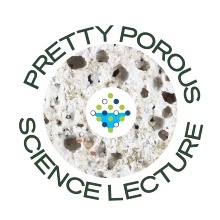We are pleased to announce that Patrick Jenny, professor at the ETH Zurich (Switzerland), will give the SFB 1313 "Pretty Porous Science Lecture" #33. His talk will be on "Tightly Coupled Hyperbolic Treatment of Buoyant Two-Phase Flow and Transport in Porous Media".
Date: Tuesday, 21 February 2023
Time: 4:00 pm CET
Speaker: Prof. Dr. Patrick Jenny, ETH Zurich
Lecture title: "Tightly Coupled Hyperbolic Treatment of Buoyant Two-Phase Flow and Transport in Porous Media"
Place: Department of Hydromechanics and Modelling of Hydrosystems, Pfaffenwaldring 61, 70569 Stuttgart, Campus Vaihingen, Room: MML
The talk will be a hybrid event. If you are interested in participating in the lecture online, please contact melanie.lipp@iws.uni-stuttgart.de
Abstract
Buoyant incompressible multiphase flow and transport in porous media typically is simulated by coupling an elliptic flow equation with a hyperbolic transport description. The tight coupling between flow and transport either requires a fully implicit solution algorithm or very small time steps, if solved sequentially. In any case, however, a large linear system has to be solved each time step. Here a new solution approach is devised, which relies on solving a coupled hyperbolic system of conservation laws with an explicit finite volume method. Consequently, only local operations have to be performed, which is a great advantage in case of massive parallel simulations and if GPUs are employed. The devised method is based on the isothermal Euler equations with momentum source terms accounting for resistance due to the porous medium and buoyancy. In this system the pressure is proportional to the density and in case of very small Mach numbers and relative density variation, the computed velocity field is divergence free and converges towards the total volumetric flow in the porous domain. To account for saturation transport, the system was augmented by an additional hyperbolic equation. In order to obtain the numerical fluxes, a characteristic based approximative Riemann solver was developed and 2nd order accuracy in space and time is achieved by piecewise linear reconstruction. Two-phase flow test cases with buoyant plumes and a lock exchange problem demonstrate that the devised hyperbolic approach recovers the the correct incompressible solutions. Numerical experiments also demonstrate that the method is accurate and efficient. Thus the devised method is very promising, and conceptually it also can be applied for flow and transport in heterogeneous media. Moreover, extensions involving more complex physics are possible, but accuracy and efficiency for such flows remain to be demonstrated.


